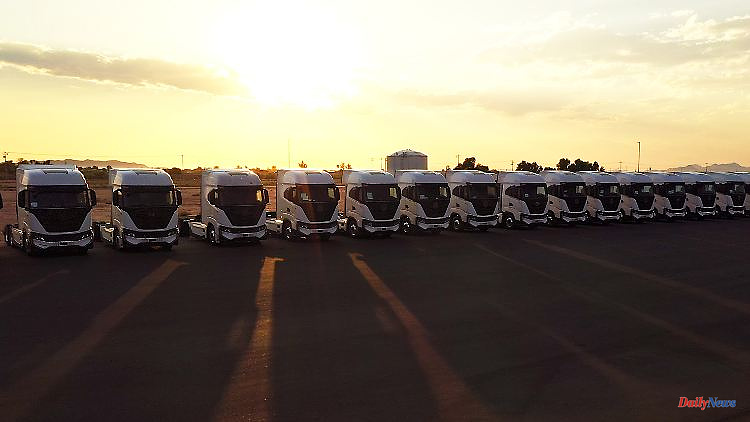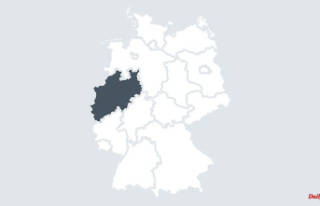So far, there has been almost no alternative to diesel in the commercial vehicle industry. If you look at the trends at the IAA Transportation 2022, other and, above all, environmentally friendly drive types will win the race in the future.
For many industry insiders, the last passenger car edition of the IAA held in Frankfurt three years ago marked the definitive breakthrough for the e-car. The commercial vehicle industry also seems to have reached such a turning point, because if you look at the innovations and trends at this year's IAA Transportation in Hanover, which ran from September 20th to 25th, climate-friendly and, above all, electric drives will have the say in the future. And the New Energy drives are now penetrating almost every segment.
It became apparent at the IAA that battery-electric drives will soon also power trucks used in long-distance transport. MAN showed what this could look like with the eTruck, which MAN boss Alexander Vlaskamp unveiled with the words "In the next few years, E will be the measure of all things". Three to six battery packs with a storage capacity of 300 to 500 kWh can be accommodated in the semitrailer. The vehicle is also suitable for megawatt charging and thus for very quick refuelling.
MAN promises a range of 600 to 800 kilometers. In a later expansion stage, the eTruck with up to 350 kW/476 hp should even cover up to 1000 kilometers. Production of a series version is scheduled to start at the end of 2023, and the first vehicles will be delivered to customers in 2024.
The eActros Long Haul from Daimler Trucks, which is also equipped for megawatt charging, is similarly positioned and can be used with batteries of up to 600 kWh and in combination with an e-trailer with a range of over 800 kilometers. As with MAN, the first customer vehicles are also planned for 2024. The Tre BEV, which was built by Nikola and Iveco and can already be ordered, is a bit further ahead, but not quite as long-range, with an impressive 738 kWh and a range of up to 500 kilometers. With a 175 kW charger, this should allow refueling from 10 to 90 percent in less than three hours.
The XF and XF series from DAF can also travel a similar distance purely electrically. There is a choice of 170 kW/231 hp and 350 kW/476 hp engines and battery packs for 200 and 500 kilometers for the trucks. The XXL Stromer can be charged with an output of up to 325 kW.
Hydrogen-based drives remain a serious alternative to the new BEV solutions for long-distance use. Several fuel cell trucks were presented at the IAA. This includes the Nikola Tre FCEV. Its 6x2 semitrailer tractor, also from Iveco, should be able to carry around 70 kilograms of hydrogen, which should be enough for 800 kilometers.
Like the Nikola, the OHM FCEV Heavy-Duty from Quantron is a Stromer with a small battery and a large H2 tank. With 54 kilograms of hydrogen and 400 kW/544 hp, a range of 700 kilometers should be possible, with a tank volume of 116 kilograms even 1500 kilometers are promised. Quantron plans to deliver as early as next year. A year later, the Keyou company plans to hand over trucks that have been converted to hydrogen combustion engines to customers. Instead of electric, however, they drive in a similar way to a diesel, but without producing exhaust gases containing soot and CO2, because only water should come out of the exhaust. That's why Keyou was also given permission to start the engine of an 18-ton truck prototype at his stand in Hall 12.
In addition to large trucks, electrically powered vans will also allow long ranges thanks to fuel cell technology with small batteries. At its stand, Renault is showing the H2-Tech versions of the Master - bus, chassis and panel van - developed with joint venture partner Hyvia. The latter is said to have a range of 500 kilometers thanks to generously dimensioned hydrogen tanks, a 30 kW fuel cell and a 33 kWh battery. The first H2 vehicles are to come to Germany in 2023. In small numbers and at comparatively high prices for the time being - but a start has to be made.
That's what you think at the tire manufacturer Michelin, who presented their ambitious goals with the Symbio subsidiary at the IAA. The industrial giant known for its tires intends to enter fuel cell production on a large scale with Symbio 2024 and produce more than 200,000 fuel cell systems per year from 2030. In order for the hydrogen sector to gain momentum, cooperation and strong partners are needed, which in the case of Symbio are called Faurecia and Schaeffler. Schaeffler itself even presented a VW Crafter equipped with its H2 technology at the IAA.
Bosch also showed an e-Crafter converted to fuel cell technology in Hanover. This should be able to cover 540 kilometers with one tank filling and refuel in 6 minutes. The prototypes from Schaeffler and Bosch are intended to show that the technology is there.
In addition to large transporters for long distances, there were also some mini trucks for primarily short distances at the IAA. Among other things, bicycle manufacturers such as Urban Arrow or Riese showed
An exciting alternative available next year is the Gaius Rapide 3 tricycle from Taiwan. car or scooter? The two-wheel handlebars of the Rapide 3 speak for the latter. The driving behavior is also more similar to that of single-track vehicles, because thanks to the tilting technology, the front part of the Rapide 3 tilts up to 35 degrees to the side in curves. Thanks to this solution, the tricycle offers agile driving behavior in curves, and it is also manoeuvrable, which has clear advantages in urban use. The Valeo electric motor delivers 13 kW/18 hp and accelerates to a maximum of 90 km/h. Power comes from an optional 6.5, 11 or 14.5 kWh battery pack. In the largest expansion stage, there should be a range of over 200 kilometers.
Many of the innovations shown at the IAA Transport could be interesting not only for the logistics industry, but also for private car users as spacious alternatives. This includes the modern-day Bulli ID Buzz from VW, of which some commercial vehicle conversions such as the Veth pick-up version were already presented at the IAA. At the same time, the Stromer was omnipresent at the trade fair in a car version, including as a trade fair shuttle.
The new Maxus Mifa 9 could also be interesting as a van for the environmentally conscious family, because the 5.27 meter long seven-seater offers not only a lot of space but also an exceptional amount of luxury if desired. It celebrated its German premiere at the IAA and will be on the market next year. Also next year, Maxus will launch the first electric pick-up in Europe with the 5.37 meter long T90 EV. It offers a large loading area, double cab, a 150 kW/204 hp electric drive and a 90 kWh battery for a range of up to 330 kilometers.
At its stand, Renault indicated a leisure variant of its electric Kangoo with the "Hippie Caviar Motel". The battery-electric Trafic was also presented as a van with a range of 240 kilometers. It will also be available in expanded versions in the future, aimed at private users. The same applies to the new Ford Transit Custom, which is to be launched next year in a purely electrically powered version with a WLTP range of 380 kilometers and 125 kW fast charging technology.












